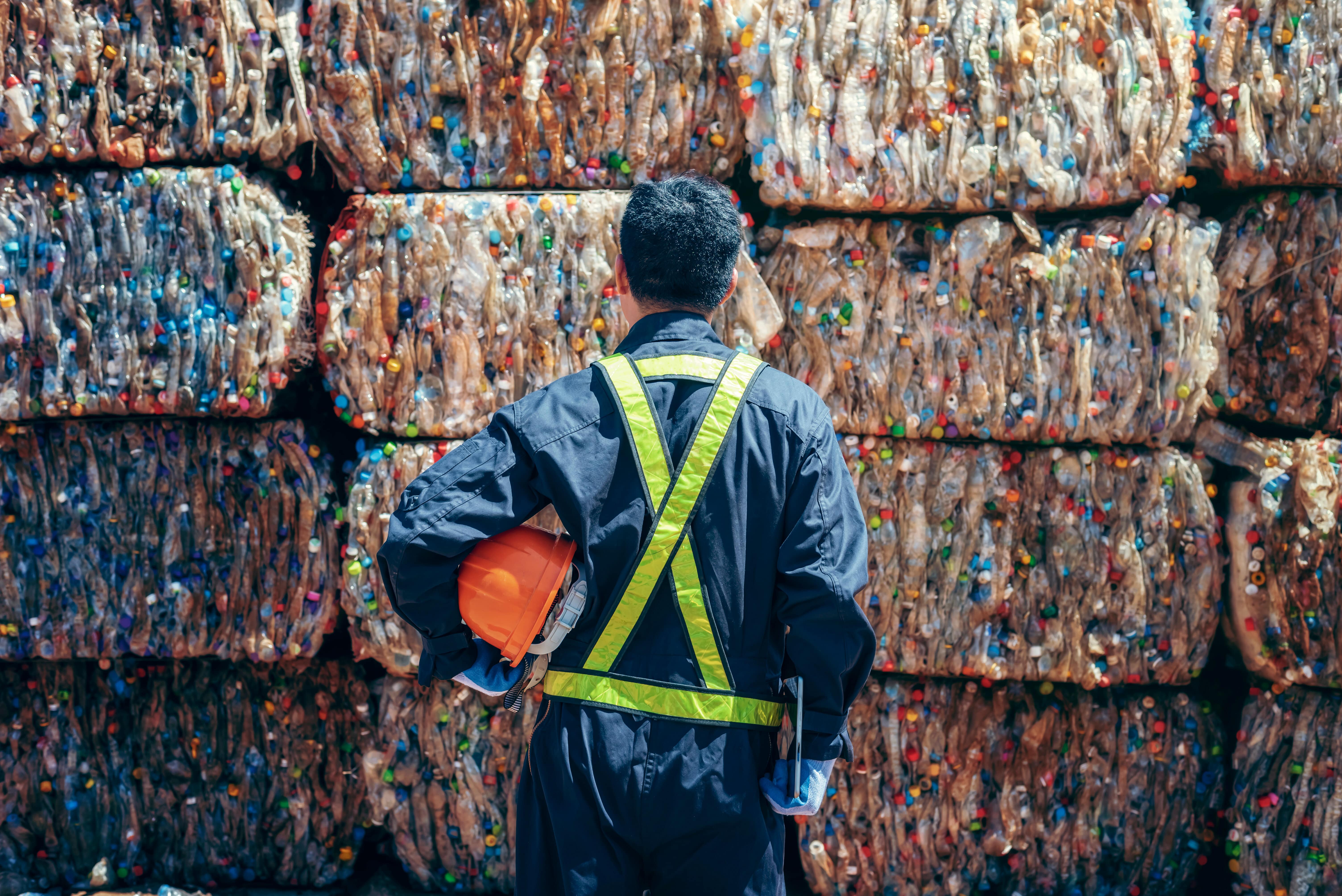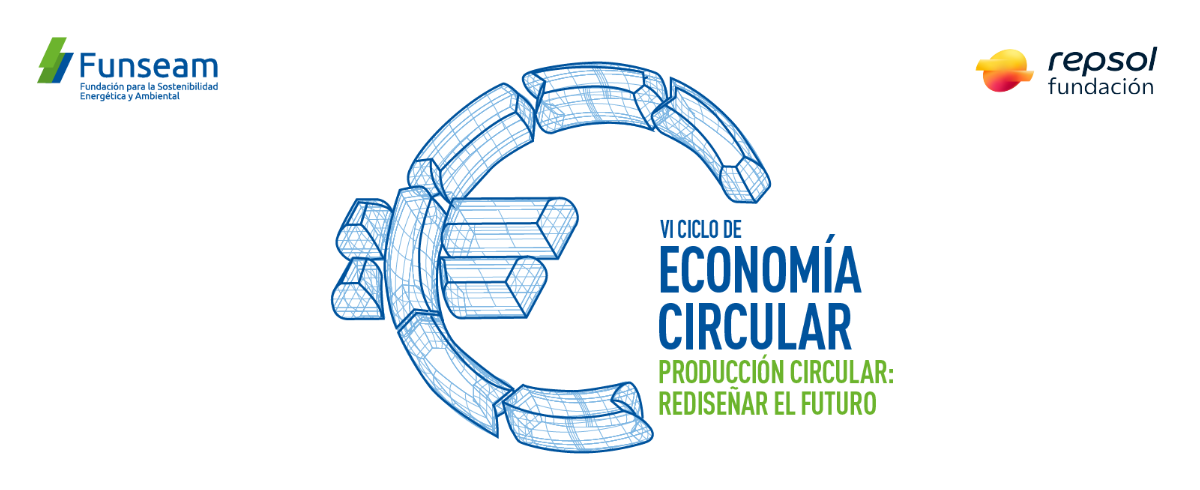The circular economy provides sustainable solutions for the demand of raw material and energy, encourages the reuse of waste, and creates new forms of consumption.
Why are we talking about the circular economy?
Since the Industrial Revolution, the predominant economic model has been linear, which means goods are produced from the extraction of natural resources and then are consumed and eventually thrown out as waste. This model has created a highly extractive and resource-intensive economy that produces enormous amounts of greenhouse gases (GHG) and negatively affects our health, environment, and economy.
The traditional linear model of extract-produce-consume-throw out does not consider the finite characteristic of natural resources or the environment’s limited capacity to absorb the waste generated. Additionally, it entails high electricity costs throughout the process, from the extraction of raw materials to its industrial transformation and marketing.
In the context of excessive use of resources, high rate of consumption, and unsustainable economic growth, the circular economy concept becomes the production and consumption model that would allow for more sustainable, low-carbon, resource-efficient, and competitive economies.
What is the circular economy?
The circular economy sets a more sustainable production and responsible consumption model in which raw materials remain in production cycles for longer periods and can be continuously reused, meaning we generate much less waste. As the name indicates, the essence of this model revolves around the idea that resources remain in the economy for the longest time possible, thus facilitating the use of our waste as our raw material or for use in other industries.
In a nutshell, it’s a restorative and regenerative economy that minimises waste and mitigates negative impacts on the environment, climate, and human health. Circular projects are intended to generate the least waste possible, optimise the use of resources, and reduce the consumption of raw materials and electricity. Additionally, products and materials, through ecodesign, are redesigned to remain in the economic cycle for as much time as possible. And their components can be recycled to create further value at the end of their useful life.
In other words, it’s a new production and consumption model that affects all economic sectors and requires the participation of all those involved, from companies to public administration to citizens, by also guaranteeing sustainable growth with time.
What benefits will it reap?
The circular economy provides solutions to the great demand for raw material and energy by an ever-growing population, the effects of global warming, and fragile economies that have a high dependence on raw materials whose prices are volatile. On top of responding to global challenges, the circular economy offers a series of financial, business, and social opportunities that can improve competitiveness, the discovery of new business models, and an increased potential for job growth. It also favours notable savings on raw material and energy costs, the development of technologies, and a boost for innovation and entrepreneurship in the so-called sustainable cities.
- It preserves the environment by: Lowering emissions, minimising the consumption of natural materials, and reducing the creation of waste.
- It benefits the local economy: It can benefit the local economy by encouraging production models based on reusing local waste as raw material.
- It drives employment: It stimulates the development of a new, more innovative and competitive industrial model and greater economic growth and increased employment.
- It favours resource independence: The reuse of local resources may lead to reduced dependence on imported raw materials.
What are the advantages of the circular economy?
The circular economy principles are based on 7 ideas, known as the “7 Rs”, in which the final goal is to maximise the use of products, promote their reuse, and once their useful life has come to an end, re-evaluate their use as waste, through zero waste management systems. In this process, we can reduce the consumption of new raw materials and energy.
- Redesign: reconsider and redesign products so that their manufacturing processes use fewer raw materials, extend their useful life, and generate less waste (or at least waste that is easier to recycle). We can improve environmental conservation in this way.
- Reduce: change our consumption habits toward a more sustainable model. If we reduce consumption, we can avoid generating waste and spending on raw materials and, therefore, reduce the impact on the environment.
- Reuse: use products more than once and for those that have reached the end of their useful life, find another use.
- Repair: we're accustomed to replacing products when they break. However, repairing the broken ones is more economical and prevents the use of new raw materials, saves energy, and doesn’t create waste for the environment.
- Renovate: restore old objects so that they can be used again, such as antique furniture.
- Recycle: encourage better practices when it comes to managing waste and using it, if possible, as raw material in the manufacture of new products.
- Recover: find a new use for products that are going to be throw out, for example, by using plastic bottles to create watering systems, planters, or birdfeeders.
What progress is Spain making in this circular transition?
Overcoming obstacles and maximising the benefits of the transition from a linear economy to a circular economy requires a strategic and coordinated commitment by all those involved, from public administration to businesses and individual citizens.
And this process has already begun. The Spanish Circular Economy Strategy, “España Circular 2030”, was approved in 2020 and laid down the framework for making the most of resources and raw materials and driving a new production and consumption mode lwith the different types of renewable energies as a basis. The Strategy is centred around successive three-year action plans. The first Circular Economy Action Plan has a budget of 1.5 billion euros and includes 116 measures from 2021 to 2023. At the same time, at the regional level, a significant push in the design of strategies associated with the circular economy can be noted in recent years.
What potential does the circular economy have in the energy sector?
Thanks to the circular economy, which promotes the use of secondary raw materials made possible with recent technological advances, traditional energy sectors (electric, gas, and oil) can expand their energy product offering to society. Some examples include renewable gas (biogas, biomethane, and green or renewable hydrogen), circular plastic materials, advanced biofuels, synthetic fuels, and more.
Additionally, it promotes the empowerment of consumers, waste and material management in the value chains of suppliers (batteries, wind turbines, solar panels, buildings, and other assets), the reuse of waste, energy self-consumption, and eco-design of products with minimal-energy consumption during their lifetime.


.jpeg)

